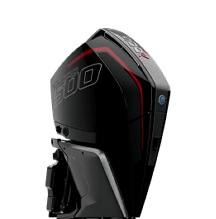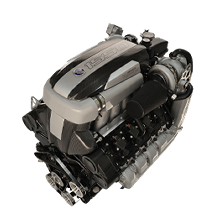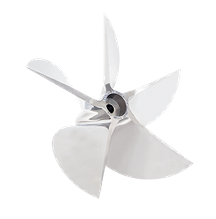Mercury Racing Blog
Prop School – Part 3: Blade Rake
Sun Nov 18 12:30:00 CST 2018


On lighter, faster boats with a high prop shaft, increased rake often will improve performance by holding the bow higher. This results in higher speeds due to less hydrodynamic hull drag. However, on some very light boats, more rake can cause too much bow lift. That will often make a boat less stable. Then, a lower rake propeller (or a cleaver style for outboard) is a better choice.
Looking at examples:
- A runabout with Alpha sterndrive usually performs best with a lower rake Black Max or Vengeance pushing the boat. The aim is broad capability and utility for many recreational activities.
- A lighter weight runabout with Alpha drive may increase performance with higher rake Enertia propellers lifting the bow offering less wet running surface (lower drag).
- Bass boats can vary widely because of the design differences among hulls in the market. Mercury offers high rake propellers such as the Tempest Plus and Fury for these applications. Mercury Racing specialty props for the bass market include the Lightning E.T., Bravo I FS, Bravo I XS and Pro Max.
- The Bravo XR drive, used with higher horsepower multi-length and weight applications, typically use props with high rake and large blade area — such as the Bravo I and Maximus.
Our Pro Finish 5-blade CNC Cleaver prop is available with 15, 18, or 21-degree rake.
Performance applications using Mercury Racing’s CNC Pro Finished Cleavers with M6 or M8 drives have three rake choices: 15, 18 or 21 degree. Most “V” and step “V” bottom boats utilize a 15 degree rake — unless the center of gravity is forward of the helm; then, 18 degree rake works best. The higher rake helps lift the bow — positioning the boat to ride appropriately on the steps. Air entrapment hulls (catamarans and tunnel hulls) pack air and lift during forward motion; they typically use props with 15 to 18 degree rake — since air pressure does most of the lifting.
The 15-degree and 18-degree rake Pro Finish CNC Outboard Cleaver is being used in a variety of applications including bass boats, performance center consoles and catamarans.
Your head probably hurts by now, so I will discuss blade cup in Prop School – Part 4.


